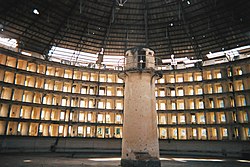The Panopticon by Jenni Fagan is a haunting tale that is a true psychological roller coaster ride. I was impressed with this debut novel, and am sure you will be too. It is simply fascinating.
About the book:
Hogarth // July 2013
As the novel opens, we meet Anais Hendricks, a few months shy of her sixteenth birthday. Anais sits in the back of a police car in Midlothian, Scotland, headed for the Panopticon, a home for chronic young offenders. She can’t remember the events that led her there, but across town a policewoman lies in a coma and there is blood on Anais’s school uniform.
Put in foster care at birth, Anais was moved through twenty-three placements before the age of seven. Along the way, she endured unspeakable hardships and abuse, and has been let down, or worse, by almost every adult she encounters. And yet, despite the parade of horrors visited upon her early life, Anais greets the world with a witty, blunt, and endlessly entertaining voice. In the Panopticon, Anais fears that the system that has turned its back on her will beat her down and ultimately break her spirit. Yet, she also finds in the other residents an ad hoc family—Isla, Shona, Tash, and Dylan—and begins to make her first halting steps toward friendships, taking charge of her own fate and discovering the depth of her own strength.
My thoughts:
This novel is a stunning debut. It is at once both twisted and beautiful. Fagan opens the novel with an immediate hook- a question of innocence. As noted above, the story begins when Anais awakes covered in blood and a policewoman in a coma. The hook quickly sucked me in- who is this girl who has been bounced around the system her entire young life and why exactly is she covered in blood? As the story moves along, we find out bits and pieces about her history. Fagan did a great job balancing just enough information to keep the reader intrigued, but not so much that all your questions are resolved.
The backdrop of this story is the Panopticon, which Fagan explains as the story unfolds. The Panopticon was vivid in my imagination thanks to Fagan's storytelling. Her descriptions of the setting were spot on- before I looked for an image of a Panopticon, I had a fully formed idea in my head, and it was exactly like the images I found. Aside from the images that Fagan so vividly painted, I was deeply haunted by this novel. Anais is a troubled girl who spent all of her years in foster care, jumping from home to home to institutions. As many of you are aware, I work with at-risk teens for a living at a residential care program (meaning they live away from family while in our care). I have seen the damage first hand. Anais brought forth some of my most troubling cases in my years of working with at-risk youth. I wanted to reach through the book and help her.
Fagan created a complex and intriguing character out of Anais. She also created a really interesting minor characters out of her friends and her case workers. I was quite amazed at the diversity I found in the characters as I read on in the story. Aside from beautiful character development and a stunning setting, Fagan dreamed up a masterful plot. It was thrilling and appalling. Dark. It touched on the inner beast in all of us, while simultaneously igniting hope.
This is not a book for the faint of heart, but it is, deep down, ultimately a story of survival. Beautifully crafted, this is a story that I will certainly revisit again.
Jenni Fagan was born in Livingston, Scotland. She graduated from Greenwich University and won a scholarship to the Royal Holloway MFA. A published poet, she has won awards from Arts Council England, Dewar Arts and Scottish Screen among others. She has twice been nominated for the Pushcart Prize and was shortlisted for the Dundee International Book Prize. She is currently the new Writer in Residence at Edinburgh University. The Panopticon is her first novel.
About Panopticon's:


What exactly is a Panopticon, you ask? Well, according to Wikipedia, it is a prison (or other institution) designed by English philosopher Jeremy Bentham in the late 18th century. The idea is that all inmates are observable at all times, but they are unable to actually distinguish between when they are and when they are not being watched. For more information, check out this Wiki. It really is quite fascinating. These two images are also from the Wiki site, both depict the prison Presidio Modelo in Cuba (images are from 2005). The first is the outside of the structure, and the second in the interior- showing the watchtower quite plainly.

write to be understood, speak to be heard, read to grow
FTC: I received this novel from the publisher in exchange for a fair and honest review.
Author information, book summary, and cover image provided by publisher website.
Information and images relating to the origin of Panoptican's from Wikipedia


No comments:
Post a Comment